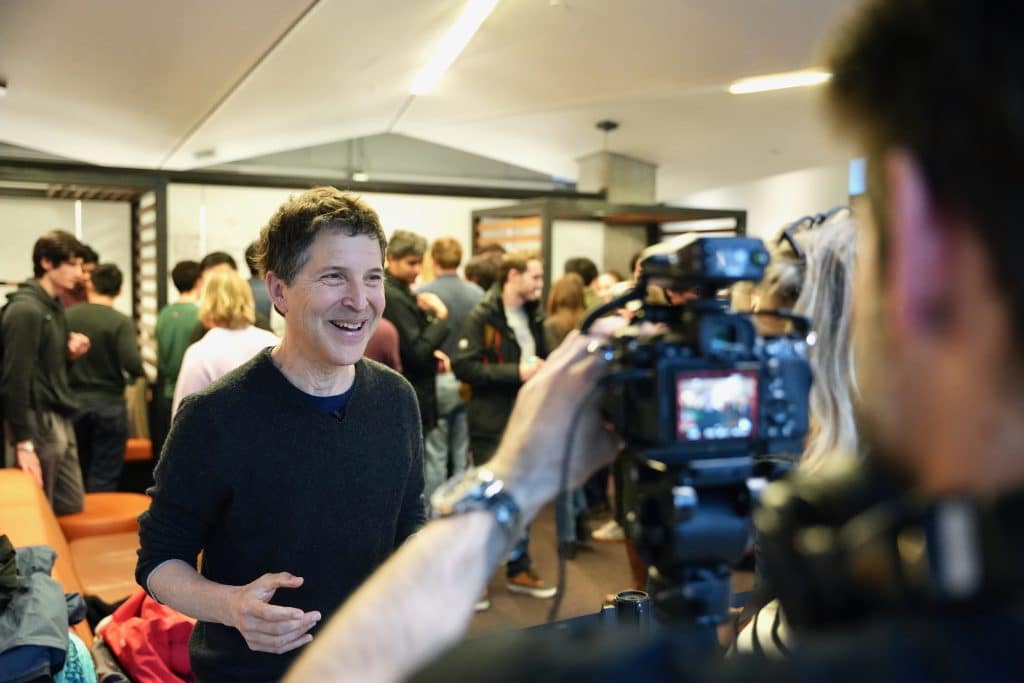A version of this perspective first appeared in Northern California Grantmakers’ Practice Lab.
Among funders and nonprofits, power sharing is a hot topic. Ten years ago, The David and Lucile Packard Foundation began our own experiment with the approach. We learned that power sharing is difficult, requiring compromise from funders and grantees alike. But in the end, it holds potential to reimagine grantmaking relationships and unlock profound impact.
In 2014, the Foundation launched Starting Smart and Strong, a ten-year place-based initiative partnering with three California communities – Oakland, East San Jose, and Fresno – to ensure that every child from birth to age five grows up healthy and ready for kindergarten. Recognizing the different contexts, demographics, and goals of these communities, we knew that a traditional top-down approach wouldn’t lead to lasting success or equitable outcomes.
That’s why we decided to try power sharing, adopting an approach called “co-creation,” a form of stakeholder engagement that prioritizes mutual trust and respect, shared decision-making responsibility, and the inclusion of diverse perspectives.
Though the concept of power sharing was gaining traction across philanthropy, it was new for us – exciting, innovative, and full of potential. Over the next decade, we would learn what it meant to truly share power.
Ultimately, the impact these three communities achieved across ten years is remarkable:
- Fresno’s Language Learning Project has become a model across California. The California State Preschool Program had adopted elements of this professional development approach designed to equip teachers and caregivers to support young dual language learners, and both the California Department of Education and Department of Social Services have supported the project’s expansion.
- Oakland Starting Smart and Strong scaled multiple interventions districtwide including coaching, developmental screening, and kindergarten transition programming, while also developing and spreading practices that support young boys of color and their families and promoting trauma-responsive, healing-centered early learning practices; and
- Franklin-McKinley School District’s focus on social emotional learning started in preschool classrooms before spreading to the early elementary grades and ultimately transforming the district’s K-8 grade system. Today, teachers and administrators across all grades understand that social emotional learning is foundational to all learning.
None of this happened overnight or by accident. Over ten years, there were bumps in the road – big and small – and getting to the destination required all the partners in Starting Smart and Strong to communicate openly, problem solve collectively, and focus continually on our shared goal.
Our intention to share power didn’t prevent us from falling into some pitfalls common in any funder/grantee relationship. We came into the initiative with assumptions – about how we could best support grantees, how the three communities would progress at a similar pace, and how communities would scale their innovations widely – which would lead to challenges.
Our initial approach to scaling innovations made some grantees feel pressured to pursue statewide scale even though their innovations were uniquely tailored to their community’s context. Similarly, our assumption that each community would progress at a similar rate put pressure on grantees facing vastly different challenges and opportunities. And even things that seemed simple – what resources the Foundation would provide or how frequently we would hold in-person convenings – proved capable of causing friction.
Power sharing is what enabled us to address these challenges effectively – without it, we might have continued moving forward, the Foundation believing that we were giving grantees what they needed and grantees believing they had to go along with it to make their funder happy. But power sharing gave us the framework to surface these issues, address them, and get back to working toward our shared goals.
Identifying and overcoming challenges together strengthened our relationships. And as trust grew, we began to find more opportunities to share power.
Here are five key lessons from a decade of power sharing. We hope they inspire and inform funders and grantees in embracing these strategies.
1. Be patient. It takes time to build trust.
Power sharing cannot happen without strong, trusting relationships. And those don’t form overnight.
If we could do it all over, we’d build in more time at the beginning to allow us deeper engagement in a collaborative planning process and to allow time for those relationships to grow organically without knocking the initiative off course. And we’d recognize that trust is an outcome on its own – establishing it will set you up for success.
2. Put all your cards on the table.
Power dynamics are inherent in any relationship between grantees and funders. But that doesn’t mean navigating those dynamics has to be awkward. Being willing and able to name your limitations or constraints can go a long way toward building trust and setting an example for open communication.
For example, maybe your organization’s board has strong feelings about how you’re measuring impact. Knowing this will help your grantee partners understand your perspective – and you can work together to find a solution. Embrace this vulnerability. It will be the most direct path to trusting relationships.
3. It will get messy, and that’s the point.
You’ve cultivated trusting relationships, and you’ve set a tone for transparent, open communication. Now, expect things to get messy.
Conflict and complexity are features, not bugs, when it comes to power sharing. A prescriptive, controlled process might be easier but won’t achieve the same impact as a co-created project.
Embrace this messiness as the very essence of power sharing. It’s inclusive, collaborative, and complex, and that’s the point. Trusting relationships and clear communication will ensure all partners have a voice, and navigating challenges collectively will strengthen relationships.
4. Let the community lead. No, really, let the community lead.
There’s real momentum behind the practice of power sharing. It’s a common refrain: trust the communities you hope to serve – they often know exactly what they need to overcome challenges or solve complex issues. And yet, it can be hard for funders to relinquish control, even if they have the best intentions. All funders have constraints they must work within. Examining those constraints honestly can help identify where limitations might be self-imposed and where you might be more flexible.
If we truly believe that communities hold the solutions to the problems we seek to address, then it’s incumbent on us to act like it – to embrace the fact that as funders, we might be most helpful in a supportive role rather than driving every aspect of the work.
5. Practice! Embracing power sharing leads to more – and more effective – power sharing.
The process of sharing power with grantees and partners is iterative. You won’t get everything right the first time, especially if it’s new for your organization. But with each iteration, you’ll continue to build a kind of muscle memory for the approach.
Now, as the Foundation’s investment in Starting Smart and Strong comes to a close, we’re applying those same lessons to our new initiative, which finds us working in new geographies, where we will need to dedicate enough time to build those relationships as a strong foundation for future impact.
Looking back at what we learned throughout this journey, it’s clear that there’s no substitute for experience. It was essential for us to learn these lessons the way we did. And yet, knowing to expect a long, sometimes messy, iterative process might have prepared us to further lean in and trust the process.







